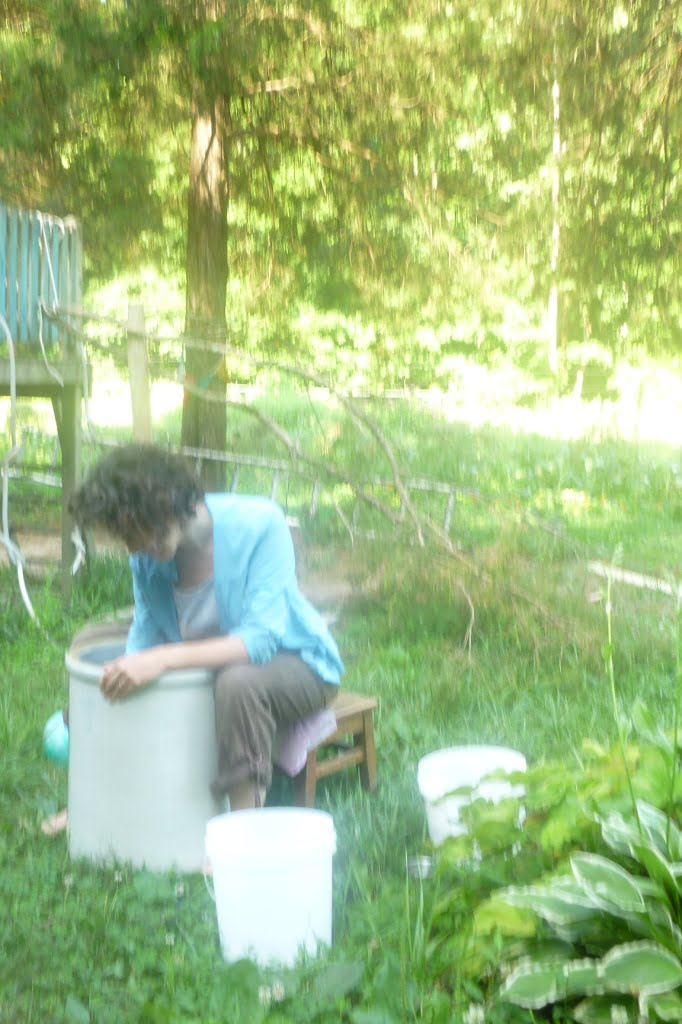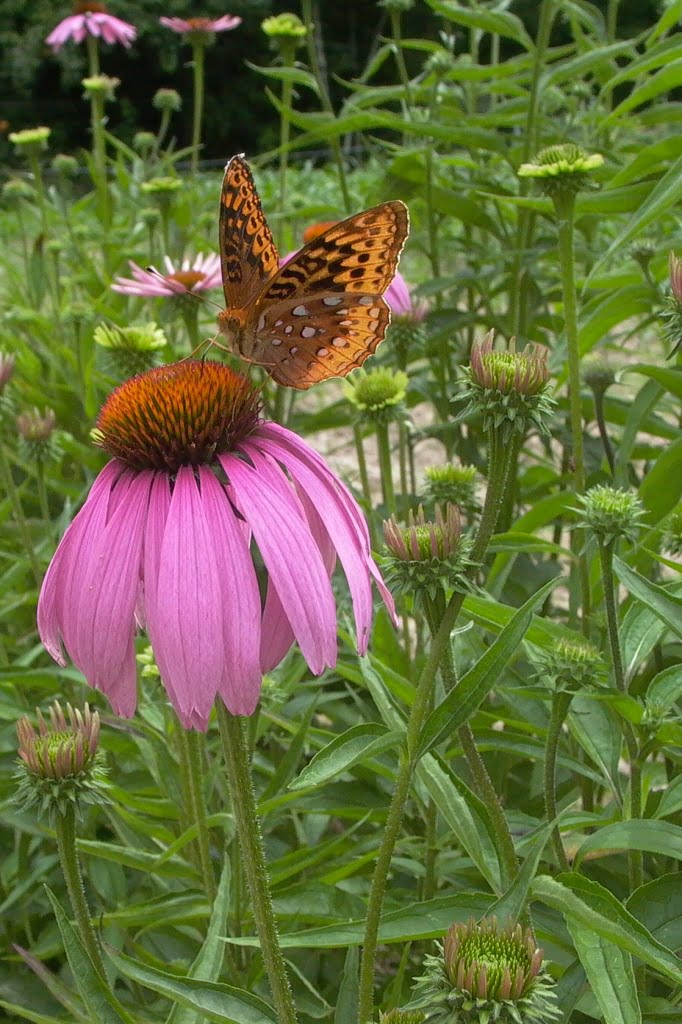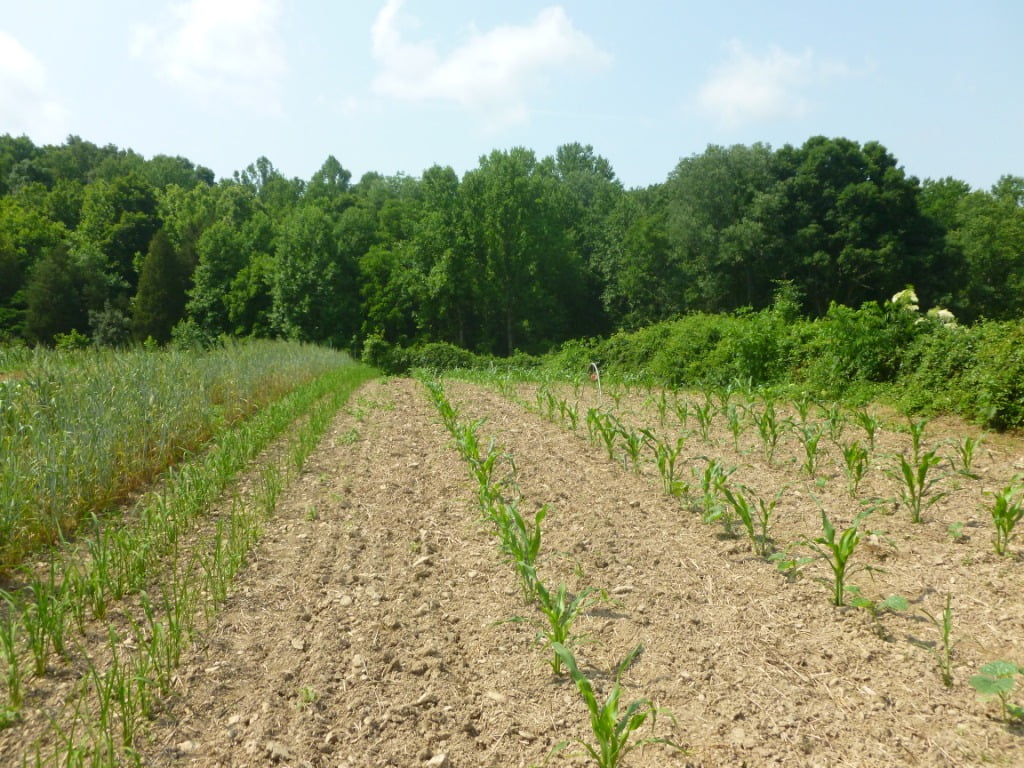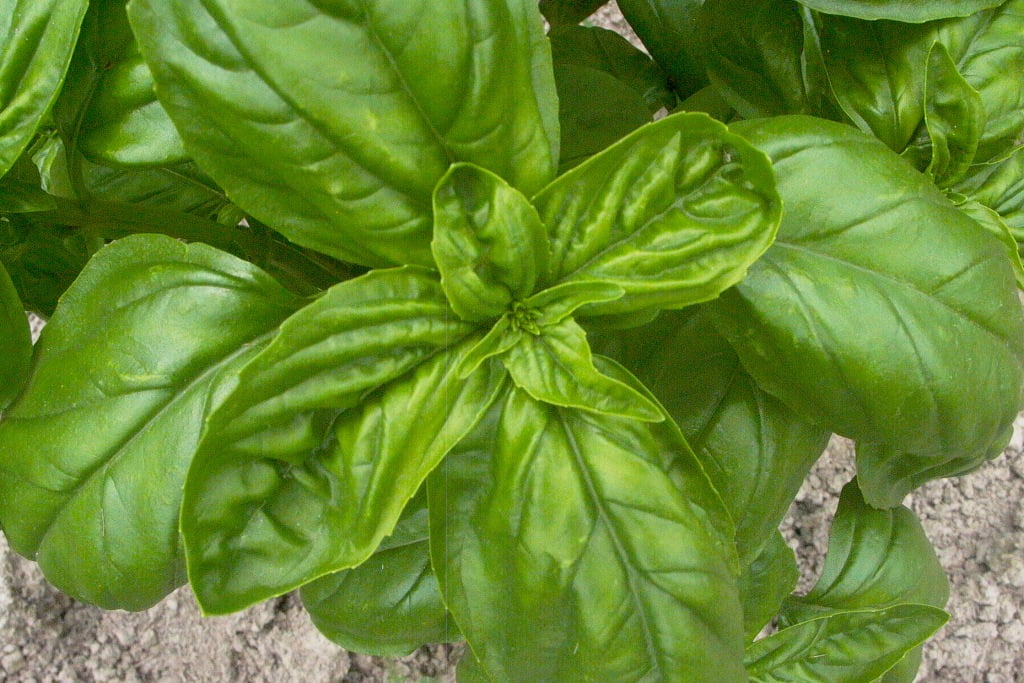intimacy
It had been too long. We’d been thinking about it, but the other work at hand kept us away from it. There’s still too much to do, but it just didn’t feel right to put it off anymore.
Finally we stirred and sprayed our Biodynamic Preparations. It’s a good feeling.
When we think of intimacy, most of us think of a spouse or lover, but there are many ways to be intimate, with our partners, children, family, co-workers, friends, and ourselves. Intimacy can be physical, psychological, intellectual, emotional or spiritual.
Today I’m thinking about intimacy in relationship to our work, and our life on the farm. Just as it is possible to sort of hum along in a marriage, or be a parent on auto-pilot, modern chemical agriculture invites us to be absent from the field. In some ways it may be easier to stuff emotions and coerce our children into cooperation, just as it’s a no-brainer to follow a fertilization schedule, plant GMO seeds, and spray Round-up. But the yields of those practices will not be strong, and the fortification of the soil for future generations is neglected at our own peril. For me, the grower’s deep relationship to the farm is the core of Biodynamic agriculture.
Biodynamics was introduced by Rudolf Steiner, the Austrian-born spiritual scientist and founder of Anthroposophy, nearly 100 years ago. It was the dawn of modern agriculture. Farmers were just beginning to become more mechanized and chemical fertilizers were becoming more common. Some growers noticed that the food produced by these methods was somehow lacking, as were the farms using these methods. A few of those farmers inquired of Steiner what might be done. Dr. Steiner answered with Biodynamics.
The philosophical and spiritual framework of Anthroposophy is deep and intricate. I will not begin to lay it out. I can’t do it justice. Nor am I going to give a “BD 101” course here. I’m just reporting on my basic understandings, and expressing the relevance of my experiences with this agricultural method. I’m also hoping to express to the consumer what they’re investing in when they choose to eat Biodynamic food.
Biodynamic farmers are called upon to build deep intimate relationship with the basic elements of the farm: plants, animals, minerals, and manure. This can sound kind of woo-woo, I know, but it isn’t. It’s not just in the head, or just a heart feeling. It’s a relationship that gets experienced with the whole body, the whole person. We gather manure, plants, rocks, meld them together, stir them, bury them, expose them to sunlight, plant them in our compost piles or spray them, diluted like homeopathic medicines, onto our fields. It’s not standard organic agricultural methods, by a long shot, nor does it replace basic good stewardship practices. It is an enriched relationship of the farmer to the farm, and the farm to the rest of creation. It works.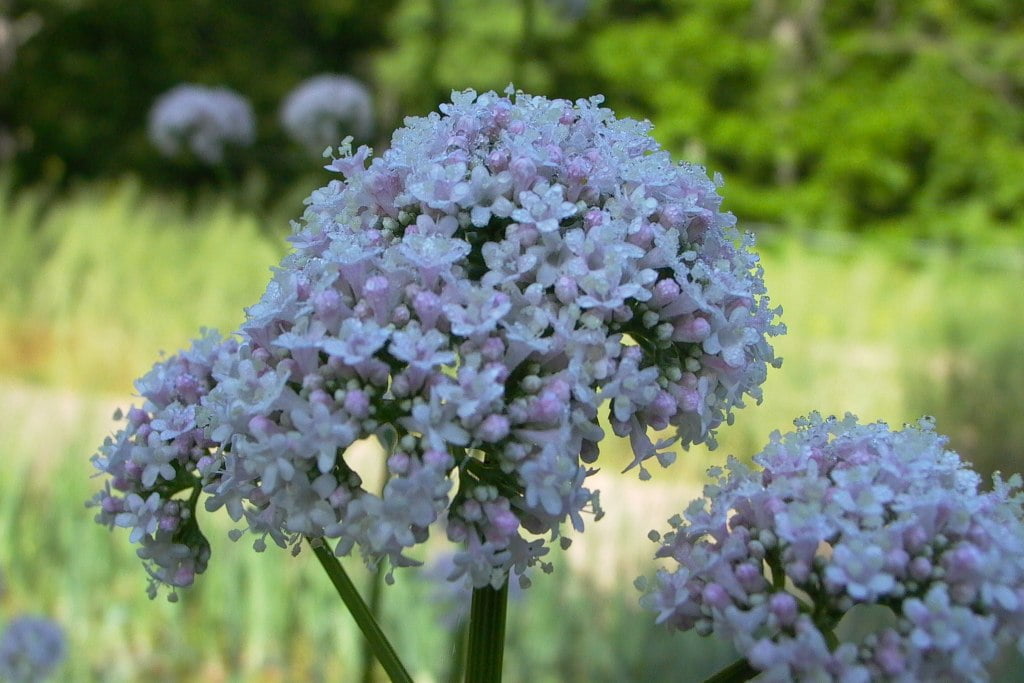
We make our own BD Preparations. We watch the herbs, the manure, minerals, animals parts, go into the ground, and we see them come out transformed. We take part in the transformation, and we make it part of our home and farm culture. The creation and application of these treatments becomes a personal ritual. This is not a dry, empty ritual we do because someone said it had to be done. It’s action that connects us to the world around us, and also to the larger universe – the worlds we can’t even see.
To stir, and spray a Preparation, we put a little scoop of it (whatever the season calls for), in a few gallons of water and stir it. One arm down in the crock, rotating the water clockwise until a nice deep vortex forms. Look at that. Then break it up, churning the water to chaos then re-establishing order in the counter clockwise direction. Back and forth, back and forth, for an hour.
 Water is so common, and so precious. We wash our hands, our bodies in it. We drink it. We cook and clean with it. But how much do we see it while we do those things? I’ve learned a lot about water by watching it churn back and forth in a crock. I suspect that one of the things that happens in these sorts of personalized elemental rituals is that we begin to regain some deep instinct. Before the industrial revolution, agriculture was a largely instinctive science. Industrialization and commercialization have changed our society, and our agriculture, and so our instincts are changed. Fight and flight, tend and befriend, get all be-fuddled with the intensity of fast paced advertising, computer-screen light, video game violence (just to name a few), and glyphosate. Spending an hour with a handful of well rotted manure and a few gallons of water, thinking of nothing but the field it will be sprayed upon, using my arms, my hands, to feel the water, the particles of compost breaking down. I can’t describe what it does to my mind and body, but I arise from the experience with different eyes.
Water is so common, and so precious. We wash our hands, our bodies in it. We drink it. We cook and clean with it. But how much do we see it while we do those things? I’ve learned a lot about water by watching it churn back and forth in a crock. I suspect that one of the things that happens in these sorts of personalized elemental rituals is that we begin to regain some deep instinct. Before the industrial revolution, agriculture was a largely instinctive science. Industrialization and commercialization have changed our society, and our agriculture, and so our instincts are changed. Fight and flight, tend and befriend, get all be-fuddled with the intensity of fast paced advertising, computer-screen light, video game violence (just to name a few), and glyphosate. Spending an hour with a handful of well rotted manure and a few gallons of water, thinking of nothing but the field it will be sprayed upon, using my arms, my hands, to feel the water, the particles of compost breaking down. I can’t describe what it does to my mind and body, but I arise from the experience with different eyes.
And then, I walk slowly up and down the field, spraying it in tiny droplets all over everything. As I walk, I can’t help but notice the lay of the land. Subtle shifts up and down. Wet and dry spots. Rocky and soft spots. Season after season, year after year, my senses absorb the experience. It all becomes more familiar, more intimate.
One oft quoted passage in the Biodynamic Course – Appendix C (the original lectures given by Steiner on the subject) speaks to what I’m getting at here: the student, Pfeiffer, asked Steiner why so many people involved in spiritual practices show so little result for their efforts. Steiner replies, “This is a problem of nutrition. Nutrition as it is today does not supply the strength necessary for manifesting the spirit in physical life. A bridge can no longer be built from thinking to will and action. Food plants no longer contain the forces people need for this.” I don’t think we’ll find anything in the USDA or FDA addressing these issues. Folks working with Biodynamics are at least given the challenge to integrate their inner lives with their outer workings, and by doing so create the kind of nutrition that doesn’t just feed the body, but also strengthens the soul.
I see this in many of my farming friends now. Their farming rituals may not be exactly what Dr. Steiner laid out at Koberwitz in 1924 and they may or may not use the word ‘biodynamic’. But we share in common a knowledge of our own land, inside and out, like the lines in our hands, and what we produce speaks of that knowledge, that relationship. When you accept that first tomato, and inhale the fragrance of the first picking of basil – may your soul be fed.
